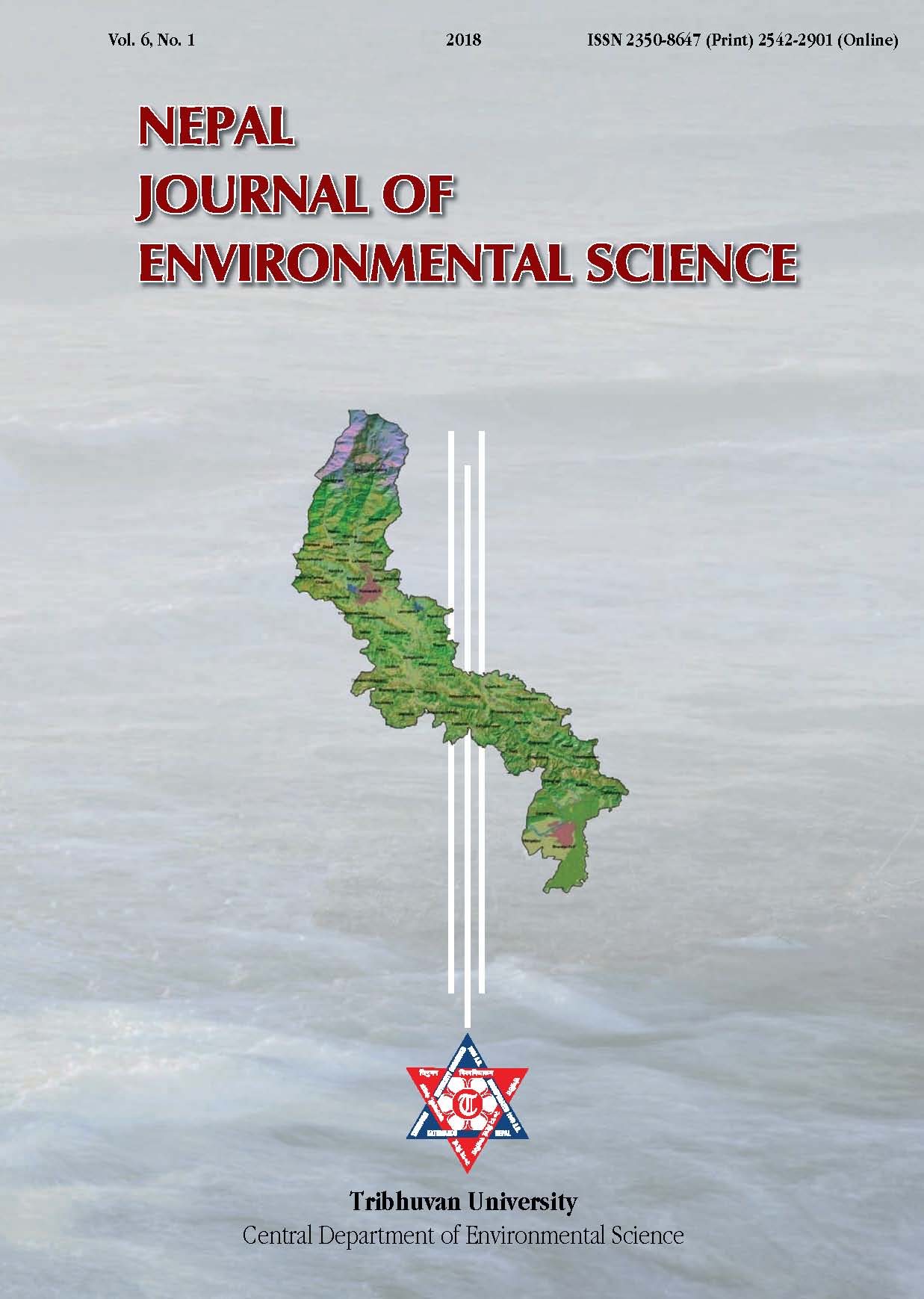Properties of briquettes and pellets of pine needles from Hattiban Community Forest, Kathmandu, Nepal
DOI:
https://doi.org/10.3126/njes.v6i0.30115Keywords:
Biomass, Briquetting, Calorific value, Proximate analysis, Pine needlesAbstract
Biomass is the most utilized primary energy source in context of Nepal. Briquetting of pine needles can be an option for natural resource management. This research work was carried out to quantify the amount of pine needles during the fall season and to study the combustion properties, performance and emission of the briquette produced. The study was carried out in Hattiban Community Forest of Kathmandu district. In order to quantify the pine needle, simple random sampling was used. The average weight of needles in field was observed to be 751g m-2. Altogether, four types of briquettes and two types of pellets were produced using different binders and various briquetting technologies. Proximate analysis was carried out following the Japanese Industrial Standards (JIS 8812) and the calorific value test was done using Toshniwal Digital Bomb Calorimeter. The result from the proximate analysis showed higher (32.93%) amount of ash content of beehive briquette. Calorific value test of the fuel showed that high pressure pellets had the higher heating value (5555.1 kcal kg-1) and beehive had the lower heating value (3801.4076 kcal kg-1). The water boiling test reveals that thermal efficiency of the stove was highest (39.1%) when operated with high pressure pellet and low (24.76%) for charcoal pellets. Except high pressure pellets, other briquettes and pellets exceeded the safe limit of carbon monoxide and particulate matter emission given by National Indoor Air Quality Standard. Fuel characteristics like high thermal efficiency, high calorific value and proximate value obtained from present analysis shows pine needles can be used as appropriate and sustainable source of energy.
Downloads
Downloads
Published
How to Cite
Issue
Section
License
This license enables reusers to distribute, remix, adapt, and build upon the material in any medium or format for noncommercial purposes only, and only so long as attribution is given to the creator.




